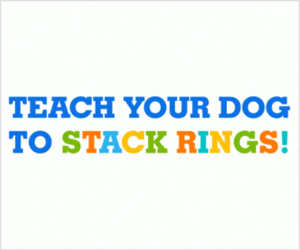Getting a new dog is an exciting and enriching experience. Having said that, dogs can also pose some behavioral challenges while they settle into their new home. And this can be frustrating for you as the new dog owner. After all, one of the major benefits of dogs over other pets is the strong bond you can develop with them. Dogs aren’t known as “man’s best friend” for nothing. But that bond can only be really strong if your dog respects you and knows how to behave. And this is where dog training comes in to play. Putting in place an obedience program for your dog will make your life easier.
It’s also good for your dog too. It goes a long way towards keeping your dog both happy and safe. And it helps to build a bond of trust between you both. So let’s take a look at some useful dog training tips to help you on the way to a well-behaved dog.
Source: https://youtu.be/JP-4d1ELAbQ
Number 1. You must establish yourself as the pack leader. In dog packs, the pack leader is the decision maker and this needs to be you. Your dog has to know who’s in charge. Note that you shouldn’t use force or intimidation for this. Your dog will just become fearful of you and intimidated by you, and that’s no basis for a good relationship. What’s more, using domination and aggression gives your dog the wrong message about what it means to be pack leader, and is sure to cause problems further down the line. No, being pack leader is about getting your dog to respect you and to trust you to lead and make the right decisions.
Number 2. Be consistent. Don’t let a puppy get away with things you don’t want them to do when older. For example, if you don’t want your dog to be allowed on the furniture when he’s older then don’t let him on the furniture when he’s a puppy, no matter how tempting it may be. It’s important to make sure everyone in the family enforces the same rules on your dog so he doesn’t become confused.
Number 3. Be positive and have fun. If you’re not enjoying the training neither will your dog. Always be friendly and positive and when your dog does well, reward him with praise, petting and treats. Don’t use training aids such as shock collars. All a shock collar will teach your dog is to be afraid of you. And you won’t have a rewarding and loving relationship with your dog if he’s scared of you.
Number 4. Don’t shout or scream. This can have the opposite of the desired effect. It’s much better to speak at your normal volume, in a calm but commanding way. Your dog doesn’t learn how to behave by being told off or shouted at. Being corrected only tells him that he’s doing something wrong, it doesn’t tell him what to do instead. It’s through getting praise and treats and other positive reinforcements that your dog learns when he’s doing something right.
Number 5. Have patience. Don’t have unrealistic expectations when you start training your dog. Your dog is likely to pick up some things relatively quickly while other things will take longer. Patience and perseverance are the keys, and you’re much more likely to remain patient if you don’t set your sights too high when starting out. As long as you stay consistent, your dog will gradually learn to be obedient and respond to your commands almost automatically.
Until then, remain realistic and enjoy the process of training your dog. Your relationship with your dog can really grow and strengthen during the training process.
Number 6. Use your voice properly. Your voice is maybe the most important dog obedience training tool you possess. This is only true if you use it properly though. You must be authoritative and commanding. It’s no use telling off or correcting your dog in a deep, firm voice only to then laugh or giggle afterwards. If you do this, you will lose any authority you had.
Number 7. Keep training sessions short and don’t train your dog when either of you are tired. You’re likely to get frustrated and so is your dog. If you notice your dog’s concentration starting to wander during a session, or you find yourself getting frustrated, cut the session short and come back to it later. Several short sessions will be more productive than one long session.
Number 8. Listen to your dog. If your dog is showing you that he’s not comfortable in a certain situation, for example when meeting another dog, don’t force things.
Instead, respect his feelings and try again later. Similarly, if your dog is showing you he’s getting frustrated during a session, quit for a while.
Number 9. Always end your training sessions on a positive note. Praise and pet your dog and tell him how well he’s done. This will make him look forward to his next session and he’ll be eager to learn more. Apply these dog training tips and you’ll soon be well on the way to having a well-behaved and obedient dog with whom you share a strong bond.








